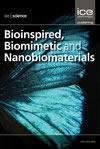Synthesis of iron oxide nanoparticles, characterization, applications as nanozyme, and future prospects
IF 0.6
4区 工程技术
Q4 ENGINEERING, BIOMEDICAL
引用次数: 2
Abstract
Iron oxide nanoparticles (NPs) have recently attracted wider attention because of their unique properties, such as superparamagnetism, larger surface area, surface-to-volume ratio, and simple manufacturing process. Several chemical, physical, and biological techniques have been employed to synthesize NPs with admissible surface chemistry. This paper summarises the approaches for producing iron oxide NPs, shape, and size management, and inviting properties in bioengineering, pharmaceutical, and modern applications. Iron oxides have significant potential in biology, climate change, and horticulture, among other fields. Surface coatings with organic or inorganic particles are one of a kind. The surface coatings of the IONPs are critical to their performance because they prevent nanoparticle aggregation, reduce the risk of immunogenicity, and limit nonspecific cellular uptake. Chitosan is a biodegradable polymer that is applied to iron oxide nanoparticles to coat them. Chitosan subordinates like O-HTCC (an ammonium-quaternary CS subsidiary) have a long-lasting positive charge that allows them to work in different pH ranges allowing their interactions with cell layers at physiological pH. By reacting epoxy propyl trimethyl ammonium chloride (ETA) with chitosan (CS), the hydro-solvent N-(2-hydroxyl) propyl-3-trimethyl ammonium chitosan chloride (HTCC) is formed. For hyperthermic treatment of patients, NPs can also be coordinated to an organ, tissue, or tumor via an external attractive field. Given the increasing interest in iron NPs, the purpose of this review is to present data from iron oxide nanoparticles specially chitosan-capped iron NPs for different biomedical fields.氧化铁纳米粒子的合成、表征、作为纳米酶的应用及前景
氧化铁纳米颗粒(NP)由于其独特的性质,如超顺磁性、更大的表面积、表体积比和简单的制造工艺,近年来引起了人们的广泛关注。已经采用了几种化学、物理和生物技术来合成具有容许表面化学性质的纳米颗粒。本文总结了氧化铁纳米颗粒的生产方法、形状和尺寸管理,以及在生物工程、制药和现代应用中的诱人特性。氧化铁在生物学、气候变化和园艺等领域具有巨大潜力。含有有机或无机颗粒的表面涂层是其中之一。IONP的表面涂层对其性能至关重要,因为它们可以防止纳米颗粒聚集,降低免疫原性风险,并限制非特异性细胞摄取。壳聚糖是一种可生物降解的聚合物,应用于氧化铁纳米颗粒上以包覆它们。壳聚糖的副产物,如O-HTCC(一种季铵CS副产物)具有持久的正电荷,使其能够在不同的pH范围内工作,从而在生理pH下与细胞层相互作用。通过环氧丙基三甲基氯化铵(ETA)与壳聚糖(CS)反应,形成水溶剂N-(2-羟基)丙基-3-三甲基氯化壳聚糖铵(HTCC)。对于患者的热疗,NP也可以通过外部吸引场与器官、组织或肿瘤协调。鉴于人们对铁纳米粒子越来越感兴趣,本综述的目的是提供用于不同生物医学领域的氧化铁纳米粒子(特别是壳聚糖封端的铁纳米粒子)的数据。
本文章由计算机程序翻译,如有差异,请以英文原文为准。
求助全文
约1分钟内获得全文
求助全文
来源期刊

Bioinspired Biomimetic and Nanobiomaterials
ENGINEERING, BIOMEDICAL-MATERIALS SCIENCE, BIOMATERIALS
CiteScore
2.20
自引率
0.00%
发文量
12
期刊介绍:
Bioinspired, biomimetic and nanobiomaterials are emerging as the most promising area of research within the area of biological materials science and engineering. The technological significance of this area is immense for applications as diverse as tissue engineering and drug delivery biosystems to biomimicked sensors and optical devices.
Bioinspired, Biomimetic and Nanobiomaterials provides a unique scholarly forum for discussion and reporting of structure sensitive functional properties of nature inspired materials.
 求助内容:
求助内容: 应助结果提醒方式:
应助结果提醒方式:


